Self-priming pumps for water: types, principle of operation, recommendations for use
Self-priming pumps are a special type of surface equipment designed to increase the working life. Their moving parts are always cooled, the seals are not damaged, the motor works flawlessly. However, due to the solid assortment, it is difficult to dwell on a suitable model. Do you agree?
Everything you need to know about self-priming water pumps can be found on our website. We detail the principle of the design and operation of units of this type, the differences in design are given. The information we provide will help you make a measured purchase.
We have described in detail the different options for self-priming pumps, given recommendations for use. Useful photos and video applications will help to deepen your knowledge.
The content of the article:
Features of self-priming units
When purchasing a unit for use in a suburban area, you should analyze a number of factors that determine the desired category.
These include:
- source depth;
- distance from the source to the house;
- head level;
- quality of water supplied;
- water consumption.
Typically, these data are taken into account when calculating the performance of the device, but they are also useful when choosing a pump according to the type of suction.
Distinguish between self-priming and normally suction devices. The difference lies in the design that regulates the reloading process in the event air enters the system.
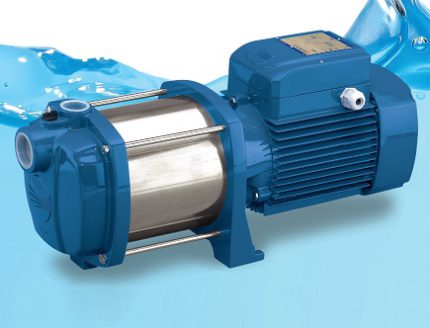
Normally suction pumps include submersible and semi-submersible pumps, the functioning of which occurs if the fluid from the source moves to the working compartment by gravity.When air enters, automatic protection against “dry running” is triggered and operation stops, since the device cannot work idle. The pump has to be restarted.
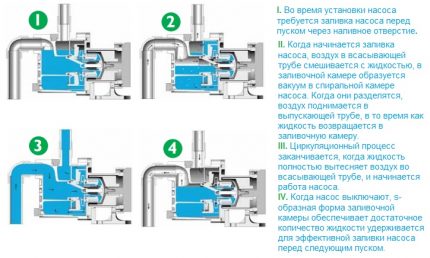
Self-priming models are designed for self-removal of air without human intervention. This is due to design features: in the upper part of the working compartment there is a plunger through which air is removed. The check valve prevents it from getting back.
Modern versions with integrated valves produce self-refilling, which eliminates the need for constant monitoring of equipment.
A small lifting height of self-priming units is also associated with the reloading process - up to 9 m. It is important to ensure that the working chamber is constantly filled with water, and the shorter the supply line, the faster the process of moving water.
Most often, self-priming pumps are part of a pumping station with a hydraulic accumulator, a suction pipe (or ejector), shut-off valves, and instrumentation.
Proper installation of the suction line
At water supply device Not only the installation of a self-priming pump or pump station is important, but also the installation of the suction line.
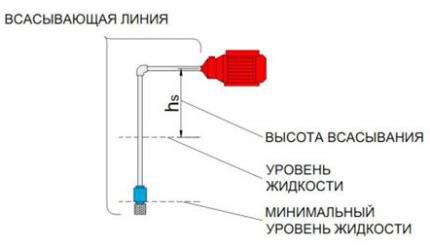
When creating a sealed water supply, the ratio of the diameter of the pipeline to the diameter of the pipe should be checked, and the length of the entire trunk should be shortened (if possible).
The longer the suction line, the higher the resistance, respectively, the lower the pressure. The presence of leaks can lead to equipment damage - this condition is relevant for centrifugal models that are not designed for pumping air-liquid media.
Pay attention to the location of the pipes. The suction line must not have kinks, kinks, or a complex prefabricated structure rising above the level of the pump; otherwise, air jams may occur that interfere with the suction process and are difficult to remove from the system.

As additional equipment installed directly on the highway, use check valve (or a simple irrevocable analogue) and a filter. Thanks to the valve, water is held in the pipeline and does not flow back, thereby protecting the pump owner from refilling.
The filter protects the equipment from the ingress of bottom sediment with large inclusions, pieces of aquatic plants, clay impurities.
Is it possible to replace the self-priming model with a conventional pump? If there is no other way out, then they do so - during the repair or purchase of new equipment.
However, do not forget about some of the nuances:
- it is necessary to completely fill the pump chamber and the line before switching on;
- air must be avoided, otherwise the equipment will fail;
- pouring should be done after each “accident” caused by depressurization of the water supply.
Practice shows that users of self-priming pumps are in no hurry to switch to conventional pumps, especially since the choice of equipment is often dictated by the optimal suction conditions.
Centrifugal Self-priming Pumps
A suitable option for autonomous use in a private suburban area is a centrifugal self-priming pump, which pumps not only clean water, but also media with small inclusions - for example, sediment from a pond.
It copes well with a liquid, which is a mixture of water and gas. The equipment is surface, that is, it is installed above the water mirror, and the process of raising the water is provided by internal vacuum in the suction line.
Types of structures and their features
It is necessary to familiarize yourself with the device of a self-priming centrifugal pump for the possibility of troubleshooting and regular maintenance. The unit is a simple mechanism, enclosed in a strong spiral-shaped case with a cover, the case material is stainless steel, cast iron, plastic.
Inside is an impeller (steel or polymer), equipped with blades deployed in the opposite direction. In addition to the impeller, the important parts are the diffuser and the ejector (Venturi tube).
Thus, almost all parts are static, and the movement defines a single dynamic element - the impeller disk (s).
The design of the pump means easy access to the main part for routine inspection or minor repairs (such as cleaning or turning). Since the device is located outside, unlike a submersible analogue, there is always the opportunity to inspect it and replace parts.

Centrifugal models are more massive than vortex ones, but they work much quieter and are able to pump dirty water with inclusions of the middle fraction. For heavily polluted environments, special drainage pumps are designed, and if additional grinding is necessary, fecal pumps.
When choosing a unit from a supplier, take an interest in the possible equipment: in addition to the electric engine, gasoline or diesel are used, however, for summer cottages, electrical equipment is more optimal. With regular preventive examinations and maintenance, the centrifugal pump can last up to 20 years.
The characteristics of the models vary, but the average performance may look like this:
- temperature inside the system - up to + 35ºС;
- air temperature outside (at the pump installation site) - up to + 35ºС;
- lifting height of the suction line - up to 8 m;
- the highest pressure in the system is 6 bar;
- motor - bipolar asynchronous (protection class not lower than IP 44).
Most of the parts are made of stainless steel, graphite or ceramic is used as the material of the mechanical seal.
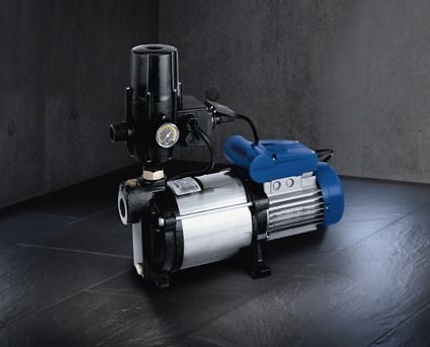
Thus, the self-priming unit in structure is very similar to the usual centrifugal pump, with one difference: the process of fluid recirculation takes place inside the housing, and not in the remote line.
Fill and drain plugs, stand for mounting to the engine, the location of the nozzles connecting the apparatus with the pressure and suction piping - as in simple equipment.
Features and principle of operation
Through the pipe, water enters from the suction pipe into the housing and fills the entire space, after which the impeller is automatically actuated. Under the influence of centrifugal force, the liquid is displaced from the center to the peripheral sections and moves under pressure to the pressure line, also connected by means of a pipe.
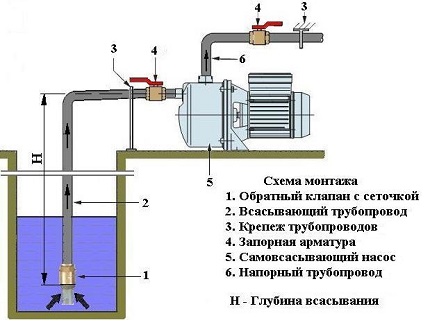
With a decrease in pressure in the central part, water is again sucked into the housing from the suction pipe. The frequency of suction-ejection is the basis of continuous water supply by centrifugal equipment.
The number of impellers in the pumps can be different, from one to several (single-stage and multi-stage), however, the principle of pumping fluid into the casing and further along the line does not change.
Scope of centrifugal units
Self-priming centrifugal devices are capable of pumping liquids that vortex-type models cannot cope with:
- viscous media;
- liquids with solid particles;
- abrasive fluids.
In this regard, this category of pumping equipment is often used in production, for example, for pumping oil products. In private use, the unit will not stagnate if the owners use a country pond or other body of water for watering the garden or kitchen garden, the water of which does not differ in purity and transparency.
The device is capable of moving liquid with thick sediment, pieces of mud and other aquatic plants.
Household pumps do an excellent job of pumping clean water, which is why they are also good for building an autonomous water supply for the building and adjacent buildings (baths, summer kitchens). A powerful performance pump is suitable for equipping a rational irrigation system not only in beds, but also in lawns, greenhouses, flower gardens and gardens.
When starting up, the self-priming of the water supply system takes place, which saves money on maintenance and guarantees stability.
Vortex impeller pumps
Among the self-priming modifications there is a group of vortex pumps, however, unlike centrifugal counterparts, they are not suitable for pumping viscous media.
The presence of solid inclusions in water must be excluded, otherwise the performance of the equipment will be violated. Vortex type pumps are simple to install and maintain, but have lower performance and low efficiency.
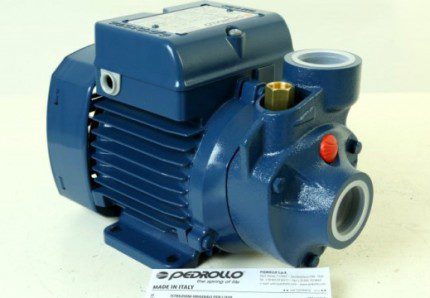
The scheme of the device and the principle of operation
The internal parts of the vortex pump are not much different from analogues of centrifugal equipment. The main dynamic part is the working disk wheel, equipped with blades arranged in a circle.
The blades rotate inside a kind of channel associated with the inlet and outlet pipes. The fluid flows through the suction pipe, under the influence of the rotation of the wheel, it spins and moves along the helical path towards the outlet.
The multiple presence of fluid in the space between the blades forms additional energy and pressure, raising water to the required level, this is the basis for the principle of operation of a self-priming vortex pump.
The intake air is mixed with the liquid, then the mixture is again divided into two components: the air is discharged outward, and the liquid continues to circulate in the working chamber. After all the air has been removed, the chamber is completely filled with water and put into operation on the principle of centrifugal equipment.
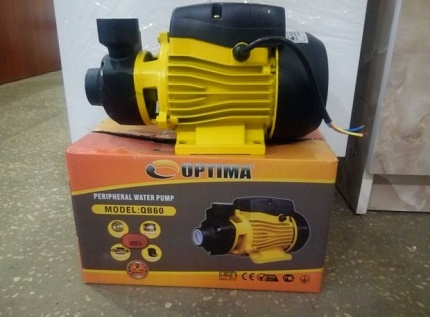
A mandatory element, like centrifugal equipment, is a check valve that performs two functions:
- prevents air backflow;
- provides filling of a working chamber with water.
The maximum height of water rise, which is provided by the vortex self-priming equipment, is 8 meters. Vortex pumps differ from centrifugal pumps in two fundamental ways: they do not pump dirty media, but they do an excellent job with moving a mixture of air and liquid.
Low efficiency (from 25% to 45%) is explained by the fact that a lot of energy is spent on the process of pumping liquid. For this reason, the owners of suburban areas prefer centrifugal units. Vortex equipment is usually remembered when it is not possible to establish a more productive analogue.
Home Benefits
The advantage of this category of self-priming pumps is their compact size and increased head (5-7 times more than that of centrifugal devices). Thus, they are rational to use when servicing a source of water located at a far distance from water pointsprovided that great performance is not needed.
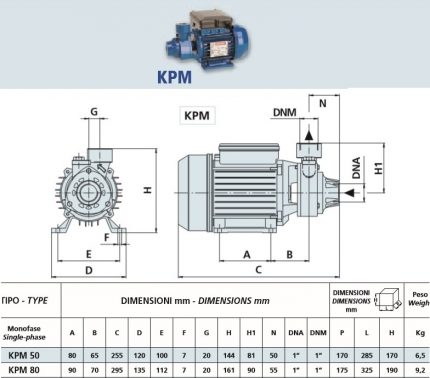
An example is pumping water from a well, the lifting height of which does not exceed 7-8 m, to the so-called "working zone", where garden plantings, beds, greenhouses are usually located. Considering the unevenness of the relief and the bending around the summer cottages, it is worth counting on a pipeline up to 100m long, which means that a large pressure is required.
In addition to the use of vortex modifications in autonomous private water supply systems, they are used to extinguish fires, ventilation devices, and in thermal installations.
Ejector - a device for deep sources
Self-priming pumps with a built-in ejector are designed for open natural bodies of water, wells and wells, the depth of water intake in which does not exceed 7 m or 8 m.
Typically, the technical characteristics of this category of equipment are reduced to the following parameters:
- productivity - 4-5 m³ / h;
- pressure - 4-6 bar;
- head - 50-60 m.
Together with the accumulator, pressure switch and a set of automation, such modifications form efficient pumping stations. At some distance from the building, where the main points of water intake are located, there are few surface self-priming equipment, an additional mechanism is required.
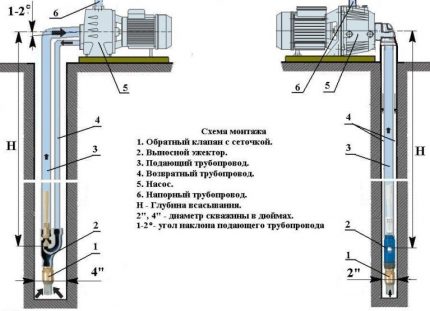
You can increase the suction power when using remote ejector which can cope with the rise of water located at a depth of 35-40 m. Industrial models of ejectors are able to work efficiently if the water mirror is at a depth of 19-20 m. The long distance to the source is also not an obstacle for the ejector device.
When using a remote ejector, the efficiency of the pumping station drops sharply - up to 30-35%, but the noise level characteristic of built-in ejectors is reduced.
Conclusions and useful video on the topic
The presented videos will help you understand the design and principle of operation of self-priming equipment.
Clip # 1. Assembly of the pump from the Asterion company (UP series):
Clip # 2. The principle of operation of a centrifugal self-priming pump:
Clip # 3. Aquarium Professional Pump Overview (AJC Series):
Centrifugal and vortex self-priming pumps are the most suitable equipment for private use in suburban areas. With their help, you can create a water supply or irrigation system.
But remember that maximum efficiency can be achieved only by carefully analyzing the conditions of use of the pumping station and studying the technical characteristics of the selected model.
We are waiting for your stories about your personal experience in pumping water with a self-priming pump. Please leave comments in the box below. Here you can ask questions about interesting points and share useful facts.

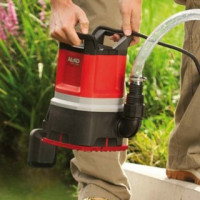 Drainage pumps for water: types, device, operation features
Drainage pumps for water: types, device, operation features 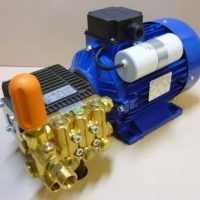 High pressure water pump: operating principle, types, rules for selection and operation
High pressure water pump: operating principle, types, rules for selection and operation  Pumps to increase water pressure: types, how to choose, installation technology + wiring diagrams
Pumps to increase water pressure: types, how to choose, installation technology + wiring diagrams 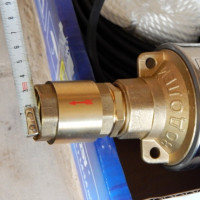 Check valve for the pump: device, types, principle of operation and installation details
Check valve for the pump: device, types, principle of operation and installation details 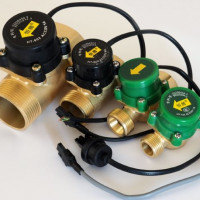 Water flow relay: device, principle of operation + instruction on connection
Water flow relay: device, principle of operation + instruction on connection 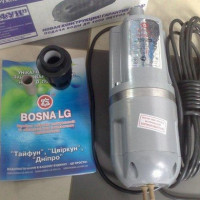 Water pumps "Typhoon": an overview of the model range, device and operating rules
Water pumps "Typhoon": an overview of the model range, device and operating rules  How much does it cost to connect gas to a private house: the price of organizing gas supply
How much does it cost to connect gas to a private house: the price of organizing gas supply  The best washing machines with dryer: model rating and customer tips
The best washing machines with dryer: model rating and customer tips  What is the color temperature of light and the nuances of choosing the temperature of the lamps to suit your needs
What is the color temperature of light and the nuances of choosing the temperature of the lamps to suit your needs  Replacement of a geyser in an apartment: replacement paperwork + basic norms and requirements
Replacement of a geyser in an apartment: replacement paperwork + basic norms and requirements
We chose a pump for the construction of a pond and a waterfall. It was necessary that the pump could be switched on / off from the automation, was unpretentious, did not stop, could start on its own, and was not clogged by the ingress of sand and stones from the bottom of the reservoir. We chose a simple centrifugal, the cheapest one we found, since we needed a small flow of water, and not an imitation of a mountain river.The summer pump worked flawlessly, but did not survive the winter, it was torn apart from frost due to not accumulated water, which stagnated from improper installation. Changed, and the new one has been serving for 5 years without complaints.
About four years ago, when they decided to organize a normal water supply in a rural house, I had to carefully study this issue. Moreover, in the process, several different types of pumps were forced to test. Well depth: 8 meters to water plus a column of water of 6 meters. The vortex pump has proven itself best (our model is not the same as here). True, over the years he wore himself out; soon he will either have to reanimate or change to a new one. You may still have to re-read.